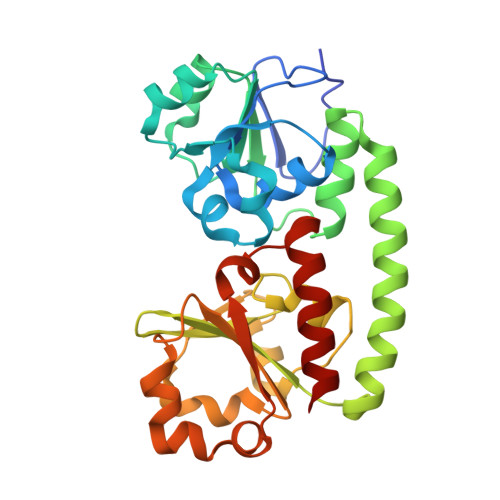Structural basis for the ligand promiscuity of the hydroxamate siderophore binding protein FtsB from Streptococcus pyogenes.
Fernandez-Perez, J., Senoo, A., Caaveiro, J.M.M., Nakakido, M., de Vega, S., Nakagawa, I., Tsumoto, K.(2024) Structure 32: 2410-2421.e3
- PubMed: 39395422
- DOI: https://doi.org/10.1016/j.str.2024.09.018
- Primary Citation of Related Structures:
8XET, 8XEU, 8XF4, 8XF7, 8XF8, 8XF9, 8XFA, 8XFI - PubMed Abstract:
Pathogenic bacteria must secure the uptake of nutritional metals such as iron for their growth, making their import systems attractive targets for the development of new antimicrobial modalities. In the pathogenic bacterium Streptococcus pyogenes, the iron uptake system FtsABCD transports iron encapsulated by siderophores of the hydroxamate class. However, the inability of S. pyogenes to produce these metabolites makes the biological and clinical relevance of this route unresolved. Herein, we demonstrated that the periplasmic binding protein FtsB recognizes not only the hydroxamate siderophore ferrichrome, as previously documented, but also ferrioxamine E (FOE), ferrioxamine B (FOB), and bisucaberin (BIS), each of them with high affinity (nM level). Up to seven aromatic residues in the binding pocket accommodate the variable backbones of the different siderophores through CH-π interactions, explaining ligand promiscuity. Collectively, our observations revealed how S. pyogenes exploits the diverse xenosiderophores produced by other microorganisms as iron sources to secure this precious nutrient.
- Department of Bioengineering, School of Engineering, The University of Tokyo, 7-3-1 Hongo, Bunkyo-ku, Tokyo 113-8656, Japan.
Organizational Affiliation:


















